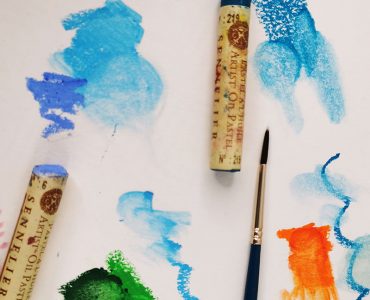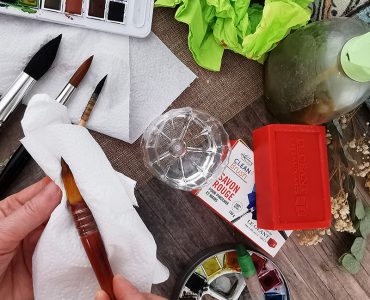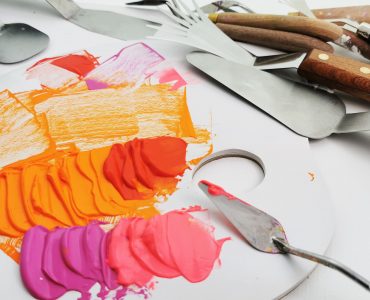Do you use Black when Painting Shadows?

In Amylee’s Studio
On my shelves, the black tube is not very accessible. It is behind colours, alone and abandoned…
Why? Because pure black is difficult to apply on paintings and often creates a mess beside colours when paint a figure, skin tones and shadows.
‘There is now A black, but blacks.’ – Yves st Laurent


Black Paint on a Portrait
According to my experiance, I’ve seen that black paint will increase the shadows on a face, but the composition quickly becomes dirty, and dull. I use black paint mostly for small details or tiny applications.
I advise painters who want to paint shadows not to use black paint, but instead use dark colours. Dark red, dark blue, and dark brown are much more interesting. You can also try using a home-made black mixed from the 3 primary colours. Try some test mixes on your palette.
Amylee’s Favourites
Depending on what you would like to show: make the paint vibrant, full of bright tones or with velvety shadows, here are my favourites:
- Dark Indigo
- Prussian Blue
- Burnt Sienna
- Raw Umber and Indanthrene Blue and Carmine
- I love mixing ultramarine with quinacridone magenta.

Examples of Dark Shades in some Brands
Amsterdam Acrylic (Expert Series)
Where to find this range of paint? Please click here for details.
Amsterdam Acrylic (Standard Series)
Where to find this range of paint? Please click here for details.
Sennelier Acrylic Paint
Where to find this range of paint? Please click here for details.
Winsor & Newton Acrylic Paint
Where to find this range of paint? Please click here for details.
Liquitex Acrylic Paint
Where to find this range of paint? Please click here for details.
Your Turn!
When creating shadows on faces, do you use black paint or other colours? Which ones? Don’t hesitate to discuss in the comments!
Information for this article was provided by professional fine artist, Amylee Paris. You can visit her colourful portfolio or follow her on Facebook and Instagram.
Find all Amylee’s posts published in GreatArt online Magazine by clicking here!
GreatArt – your art superstore
Art supplies, ideas and advice for all techniques.
GreatArt offers you art supplies for all techniques from:
- traditional fine art painting,
- drawing,
- sculpture,
- printmaking,
- graphic art,
- illustration,
- airbrushing,
- model making…
We offer an extensive range of stretched canvas and display products for exhibition, all the art supplies required to create your own bespoke canvases, as well as custom framing and mounting services from GreatArt Store. You’ll also find hundreds of articles and tutorials to browse in the online magazine.





















No – I never use black. I’m a watercolourist and when I first started I did use it but it always looked like a hole in the painting and attracted too much attention. I now use a whole range of colours especially from the blue to brown end of the spectrum. As long as they are almost pure colour and placed alongside a light value they will appear very dark. Even if some object is black, such as a car, try not to paint it black – a dark indigo or neutral tint will be much more effective. It also allows you to modify the value within the same object much more easily – making it more interesting.